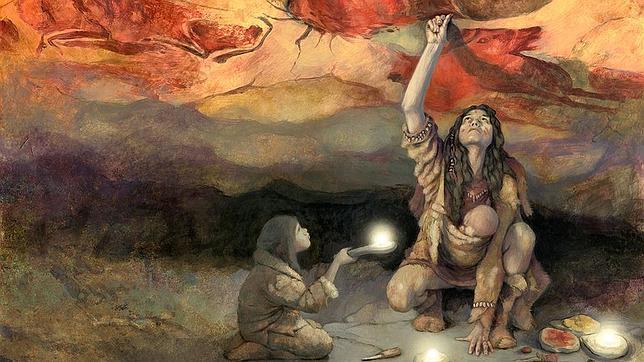
These are some basic instructions for your first projects:
PRESENTATIONS
These are the parts a presentation has to include:
- A cover with the title, one or several images related to the content and your name and group
- Several slides combining text and images related to what you explain
- Last slide with the sources you've used: Internet sources and bibliography
The way to cite books in English is the following:
Author, (Year of publication in brackets). Name of the book (in Italic font and all the words in capital letters), Place where it was published, Publisher.
Example:
Carley, M. J. (1999). 1939: The Alliance That Never Was and the Coming of World War II. Chicago: Ivan R. Dee Publisher
And this is the way to cite websites in English:
Name of the website. Editor(s) of the website. Date of electronic publication. Associated institution. Date of access <URL>.
Example:
BBC on the Internet. 2005. British Broadcasting Company. 12 Apr. 2005 <http://www.bbc.com>.
Example:
BBC on the Internet. 2005. British Broadcasting Company. 12 Apr. 2005 <http://www.bbc.com>.
Some useful advice:
- First, read the notes and solve all your doubts before starting to work
- Prepare a previous scheme and be sure that you don´t forget any part.
- Look for all the information you will need. You have to make sure that you understand all the information before starting to write your final text.
- Copy the links of the websites you visit to include them at the end of your explanation and save them on a Word document. This way, you won't lose time looking for the links you've used when you finish your project.
- Create a folder for the images you find and save it on your computer.
- Don´t copy and paste nor use the computer translator ( I will discover it)
- Write simple and understandable sentences
- Don't include too much information.on every slide. It´s better that you include another slide, rather than overloading a slide with too much text.
- Don´t copy and paste nor use the computer translator ( I will discover it)
- Write simple and understandable sentences
- Don't include too much information.on every slide. It´s better that you include another slide, rather than overloading a slide with too much text.
REPORTS OR ESSAYS
As in every research project, you have to start preparing a work plan or scheme. After this, you should compile all the information you will need and when you have all the data or opinions you need, you will be able to organize your ideas and start writing.
On this link you have a chart that includes the differences between a report and an essay and a detailed explanation of how to write good reports and essays:
http://www.canberra.edu.au/studyskills/writing/reports
And this is another very good guide to write a good report:
http://library.bcu.ac.uk/learner/writingguides/1.02%20Reports.htm
And finally, these are some useful links to extract information for your prehistory projects. They are a starter, but don't forget to make a deeper research on the sites you choose:
http://algargosarte.lacoctelera.net/post/2011/10/03/los-grandes-yacimientos-rupestres-del-paleol-tico-superior-la
http://horarioscentros.uned.es/archivos_publicos/qdocente_planes/472148/13neoliticopiberica.pdf
http://algargosarte.lacoctelera.net/categoria/01-2-neolitico-y-edad-metales
http://e-ducativa.catedu.es/44700165/aula/archivos/repositorio//3750/3884/html/21_el_neoltico_llega_a_la_pennsula_ibrica.html
http://www.xn--espaaescultura-tnb.es/es/estilos/prehistoria/ccaa.html
http://www.cuevasturisticas.com/enl_Cuevas.asp
http://www.museoevolucionhumana.com/~museoevo/es

As in every research project, you have to start preparing a work plan or scheme. After this, you should compile all the information you will need and when you have all the data or opinions you need, you will be able to organize your ideas and start writing.
On this link you have a chart that includes the differences between a report and an essay and a detailed explanation of how to write good reports and essays:
http://www.canberra.edu.au/studyskills/writing/reports
And this is another very good guide to write a good report:
http://library.bcu.ac.uk/learner/writingguides/1.02%20Reports.htm
And finally, these are some useful links to extract information for your prehistory projects. They are a starter, but don't forget to make a deeper research on the sites you choose:
http://algargosarte.lacoctelera.net/post/2011/10/03/los-grandes-yacimientos-rupestres-del-paleol-tico-superior-la
http://horarioscentros.uned.es/archivos_publicos/qdocente_planes/472148/13neoliticopiberica.pdf
http://algargosarte.lacoctelera.net/categoria/01-2-neolitico-y-edad-metales
http://e-ducativa.catedu.es/44700165/aula/archivos/repositorio//3750/3884/html/21_el_neoltico_llega_a_la_pennsula_ibrica.html
http://www.xn--espaaescultura-tnb.es/es/estilos/prehistoria/ccaa.html
http://www.cuevasturisticas.com/enl_Cuevas.asp
http://www.museoevolucionhumana.com/~museoevo/es
And these are the links your photocopy includes:
- Example of presentation:
- Collaborative map:
- Latest discoveries in the Iberian Peninsula:

2 comments:
Hi Paqui again !
A small mistake, *On thsi link instead of 'on this link'. That's all, see you !
You make a very careful reading! I review before publishing, but sometimes I don't see my own mistakes :(
Thanks again!
Post a Comment